There’s No Such Thing As a “Pilates Body”—and These Moves Are Proof
But despite the workout's image (or, ahem, body image)—one rife with lithe celebrities touting its ability to deliver elements of cultural ideals, like ultra-toned abs—Lee changed her mind after attending a Plus Size Pilates workshop at Brooklyn Strength. In fact, she found the experience ultra-empowering, and has now been practicing Pilates regularly for about a year. "I feel stronger, more powerful, confident, and just more free to take up space."
This revolutionary component in what is often a shape-conscious world came as a surprise to Brooklyn Strength's owner, Cadence Dubus. "We didn’t realize that this idea of just working out to feel strong and grounded in your body as opposed to working on the outside would be such a novel idea," she admits.
"Joseph Pilates never even talked about abs or anything like that. He was just all about your whole body getting stronger"
Dubus says body diversity is a given at Brooklyn Strength, but she realized how strong the skinny girls-only stereotype was after one of her clients, Girls star Jemima Clark, got a surprising amount of attention for her workout goals (which focused on strength, not weight loss). Now, the studio is hosting a Plus Size Pilates workshop again in January based on the overwhelming interest in the topic.

{{post.sponsorText}}
"It's funny because Joseph Pilates never even talked about abs or anything like that. He was just all about your whole body getting stronger; about you having an efficient body that you’re fully aware of," she explains. "The goal of Pilates is that full-body awareness."
The benefit of breaking down the stereotype, of course, is that more women are able to experience that transformation. "I wasn’t in touch with my body, I didn’t feel connected to it," Lee says. "Pilates just made me feel more present. Feeling like you’re in control of your body is hugely liberating for plus-size women."
Want to give it a shot? We asked Dubus to share three simple exercises you can try at home, demo-ed here by Lee. They progress in difficulty, so start with number one and work your way up to three.
Read on for Dubus' starter sequence, to build strength and feel powerful—no "Pilates body" required.
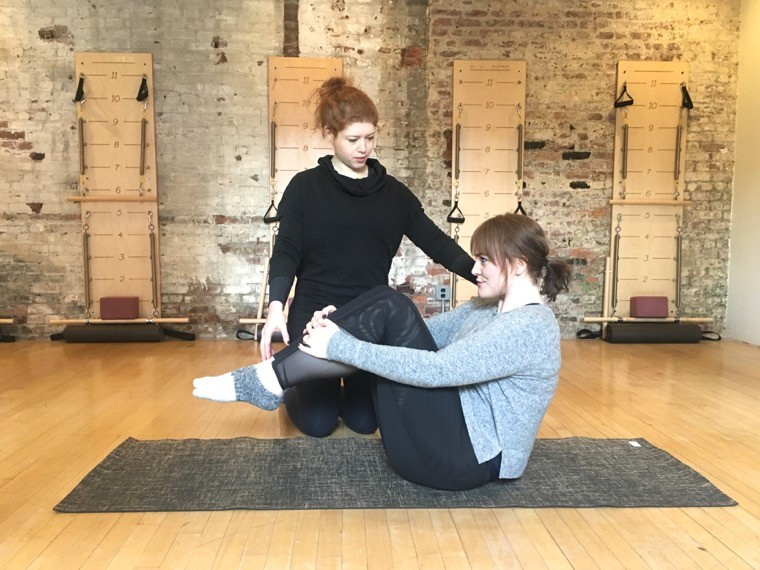
1. Rolling like a ball
Sit up on your sit bones and draw your knees as close to your chest as you can (AKA make yourself into a tight ball shape). Look at your belly button and round your lower back using your abdominal muscles to contract into this deep C curve/ "ball shape." Try to keep your shoulders down—you're in a deep C shape, but not slouching or hunching. Your abdominals are deeply engaged, not slumping into your hips.
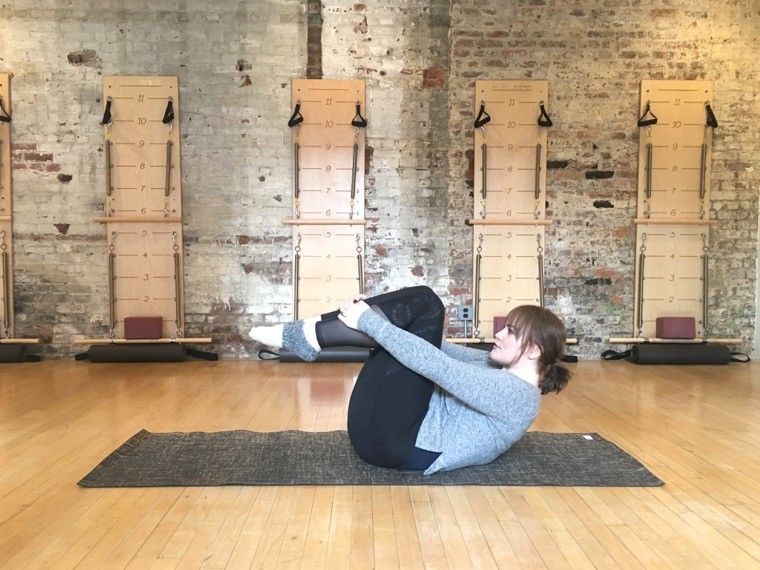
Keep this shape and roll back to just under your shoulder blades.
Exhale strongly and contract your abdominal muscles to roll back up. Try not to let your toes touch at the top and try not to kick your legs to help you get up. The more you do it, the more your back will loosen and your abdominals will get stronger and more coordinated.
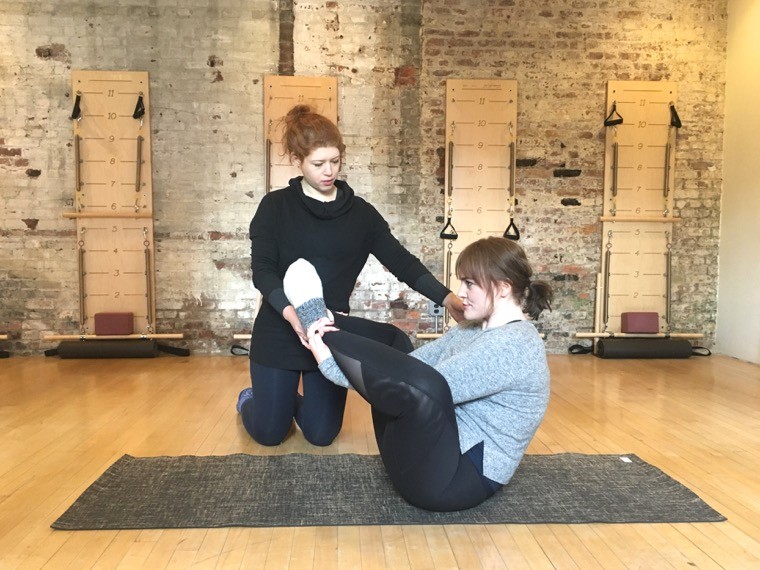
2. Seal
Start with the same set-up in the torso as the first exercise, except now your legs are open, similar to lotus position in yoga. Hold your ankles with your hands on the underside of your calves. Try to relax your legs and really hold them like dead weight.
This exercise challenges you to keep your abdominals engaged but your hips, hip flexors, and legs relaxed. Being able to contract the abs and release the legs means you have deep coordination, which improves your ability to execute any activity more efficiently and with deeper muscular control.
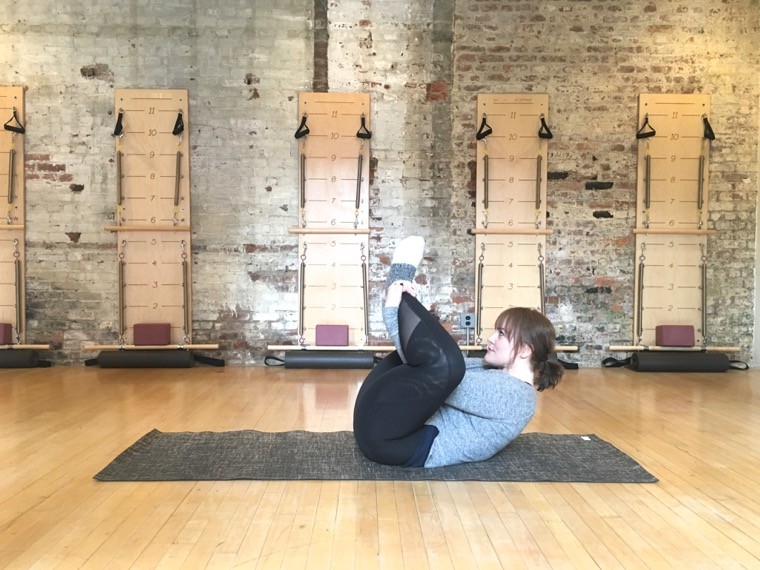
"Clap" your feet by moving your legs with your arms three times, then roll back to your shoulder blade tips.
Roll up, pause, and clap again. Pausing the roll means you aren't just using momentum to get up and fall back. Being able to stop and clap like a seal proves you are deeply engaging your abdominal muscles and breath.
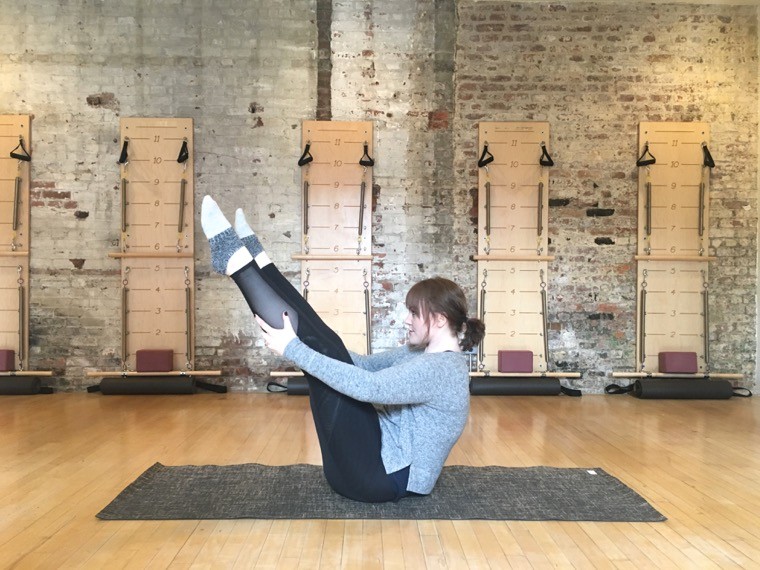
3. Open leg rocker
Same torso set-up as the first two exercises, except you open one leg, then the other, and hold them with your hands. You can hold the thigh, calf, or ankle.
If you're working on gaining flexibility in your hamstrings and lower back, you can stay here and work on extending the legs and keeping your balance. If you feel like you can extend the legs and balance with relative ease, roll back.
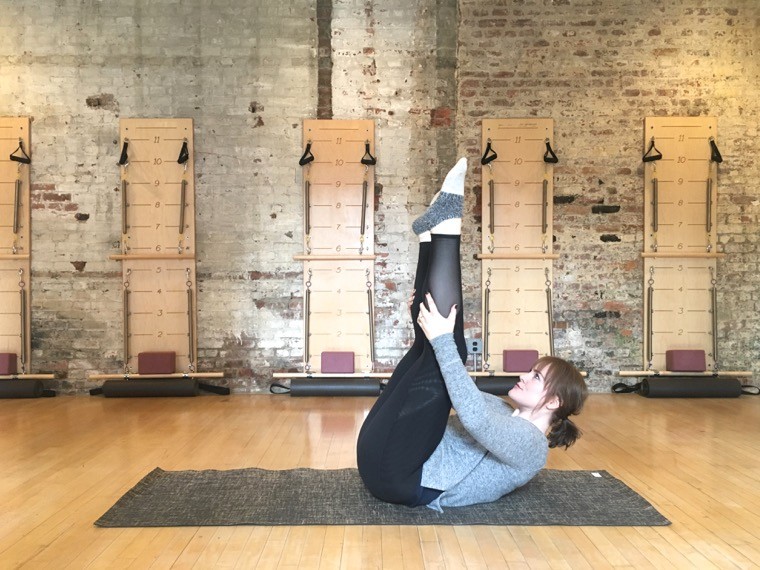
Roll back to your shoulder blades. Be careful: With your legs extended, you have more weight falling over your head, so it's easy to roll all the way back and get stuck like a turtle. Use your breath and exhale loudly and strongly to get back up and onto your sit bones.
It also helps to really press your legs into your hands—don't kick them, just strongly extend them into your hands. Use the abdominal control you developed over the first two exercises to roll back and roll up just as smoothly as in the first two variations.
More Pilates intel: Here's another at-home workout, which replaces the Reformer with paper plates (seriously)—plus, how to do Pilates on a spin bike (and why you should in the first place).
Loading More Posts...